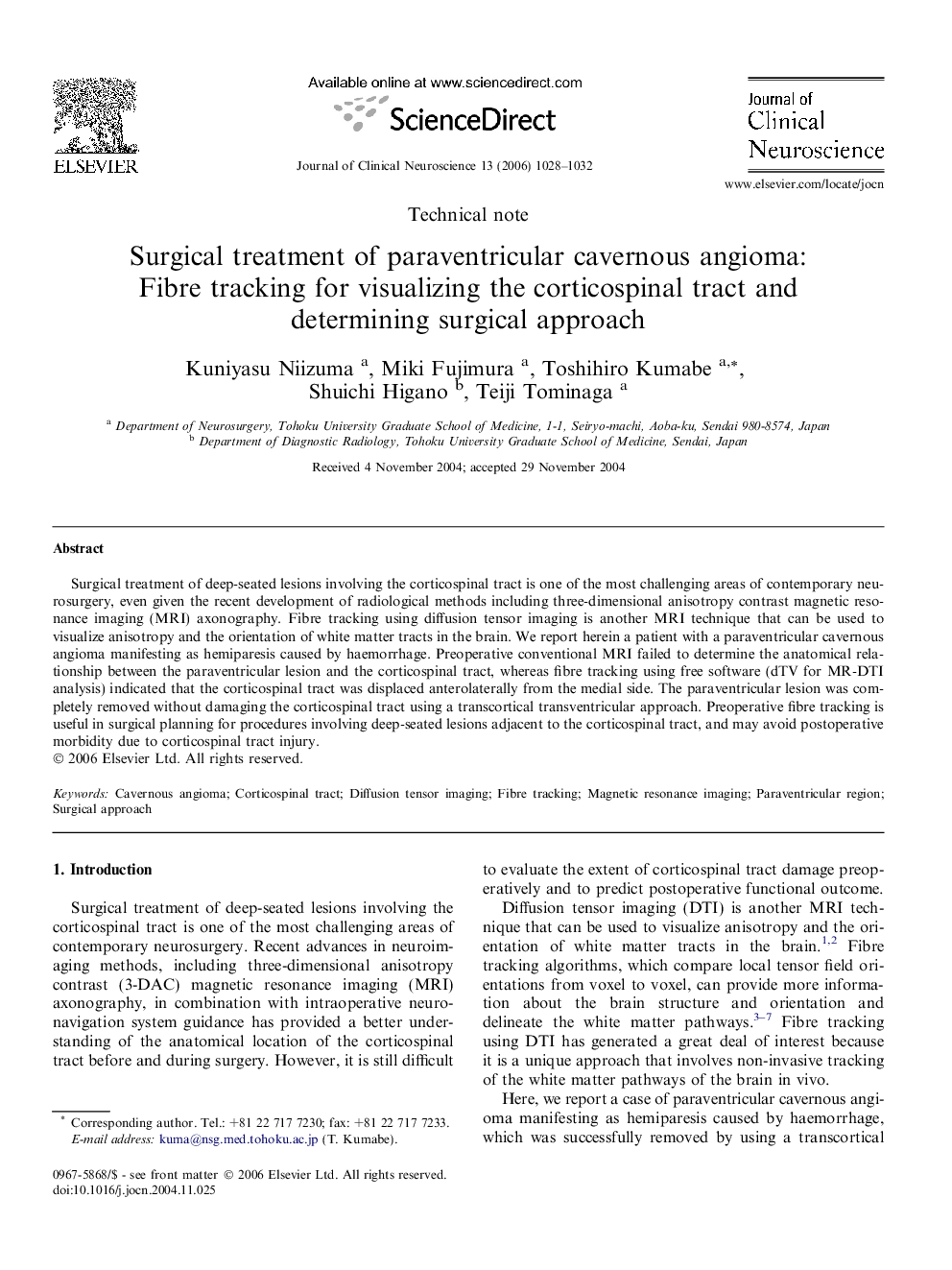| Article ID | Journal | Published Year | Pages | File Type |
|---|---|---|---|---|
| 3063329 | Journal of Clinical Neuroscience | 2006 | 5 Pages |
Abstract
Surgical treatment of deep-seated lesions involving the corticospinal tract is one of the most challenging areas of contemporary neurosurgery, even given the recent development of radiological methods including three-dimensional anisotropy contrast magnetic resonance imaging (MRI) axonography. Fibre tracking using diffusion tensor imaging is another MRI technique that can be used to visualize anisotropy and the orientation of white matter tracts in the brain. We report herein a patient with a paraventricular cavernous angioma manifesting as hemiparesis caused by haemorrhage. Preoperative conventional MRI failed to determine the anatomical relationship between the paraventricular lesion and the corticospinal tract, whereas fibre tracking using free software (dTV for MR-DTI analysis) indicated that the corticospinal tract was displaced anterolaterally from the medial side. The paraventricular lesion was completely removed without damaging the corticospinal tract using a transcortical transventricular approach. Preoperative fibre tracking is useful in surgical planning for procedures involving deep-seated lesions adjacent to the corticospinal tract, and may avoid postoperative morbidity due to corticospinal tract injury.
Keywords
Related Topics
Life Sciences
Neuroscience
Neurology
Authors
Kuniyasu Niizuma, Miki Fujimura, Toshihiro Kumabe, Shuichi Higano, Teiji Tominaga,
